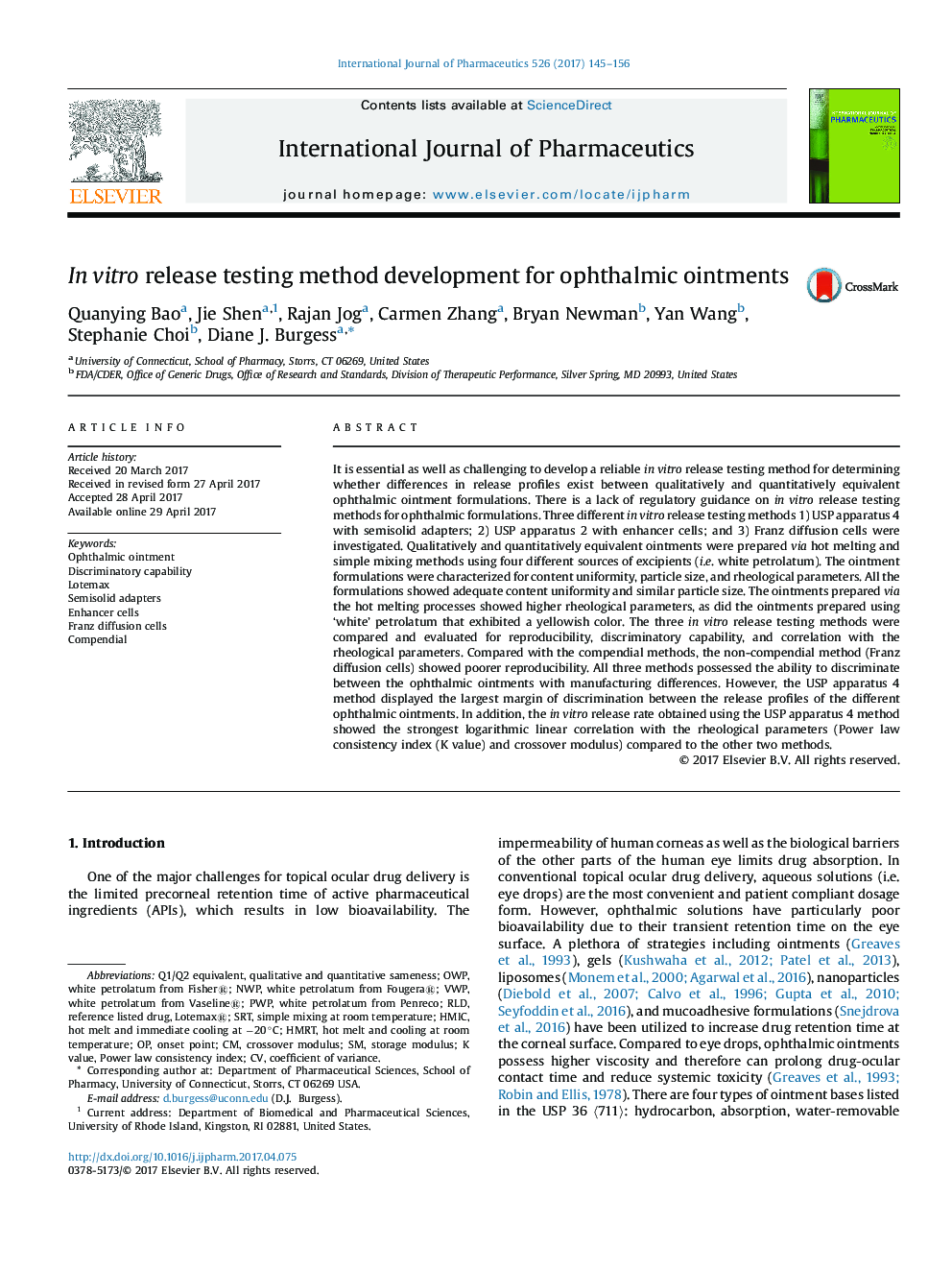| کد مقاله | کد نشریه | سال انتشار | مقاله انگلیسی | نسخه تمام متن |
|---|---|---|---|---|
| 5550242 | 1557289 | 2017 | 12 صفحه PDF | دانلود رایگان |
It is essential as well as challenging to develop a reliable in vitro release testing method for determining whether differences in release profiles exist between qualitatively and quantitatively equivalent ophthalmic ointment formulations. There is a lack of regulatory guidance on in vitro release testing methods for ophthalmic formulations. Three different in vitro release testing methods 1) USP apparatus 4 with semisolid adapters; 2) USP apparatus 2 with enhancer cells; and 3) Franz diffusion cells were investigated. Qualitatively and quantitatively equivalent ointments were prepared via hot melting and simple mixing methods using four different sources of excipients (i.e. white petrolatum). The ointment formulations were characterized for content uniformity, particle size, and rheological parameters. All the formulations showed adequate content uniformity and similar particle size. The ointments prepared via the hot melting processes showed higher rheological parameters, as did the ointments prepared using 'white' petrolatum that exhibited a yellowish color. The three in vitro release testing methods were compared and evaluated for reproducibility, discriminatory capability, and correlation with the rheological parameters. Compared with the compendial methods, the non-compendial method (Franz diffusion cells) showed poorer reproducibility. All three methods possessed the ability to discriminate between the ophthalmic ointments with manufacturing differences. However, the USP apparatus 4 method displayed the largest margin of discrimination between the release profiles of the different ophthalmic ointments. In addition, the in vitro release rate obtained using the USP apparatus 4 method showed the strongest logarithmic linear correlation with the rheological parameters (Power law consistency index (K value) and crossover modulus) compared to the other two methods.
84
Journal: International Journal of Pharmaceutics - Volume 526, Issues 1â2, 30 June 2017, Pages 145-156
